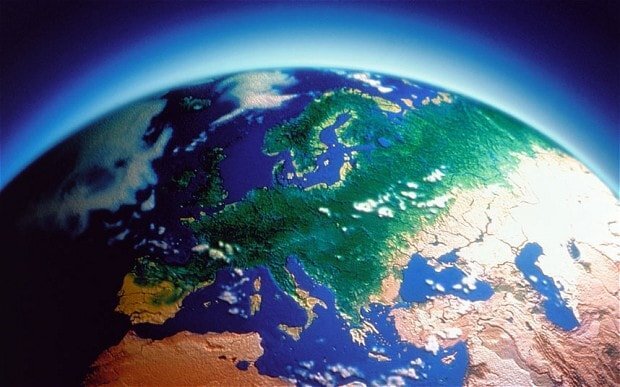World Ozone Day: preserving a layer that takes 50 years to repair

TEHRAN – The ozone layer is of great importance for its sustaining life on earth, if harmful emissions are reduced enough, it will take about 50 years for the ozone layer to repair so that it requires global attention and action.
Observed on September 16, the International Day for the Preservation of the Ozone Layer is celebrated every year across the globe since December 2000. The theme for the celebration of this year is "Montreal Protocol - Keeping us, our food, and vaccines cool".
34 years ago, the use of harmful man-made chemicals began eating away at the ozone, the hole over Antarctica was first discovered by the British Antarctic Survey in 1985.
Therefore, 197 countries signed “the Montreal Protocol on substances that deplete the ozone layer” to cut short of the substances that deplete the ozone layer; the United Nations (UN) enforced it in 1989, which is now considered the most successful international environmental treaty.
The ozone layer is a part of the atmosphere that has high concentrations of ozone (a gas made of three oxygen atoms O3), compared to oxygen molecules that exist in nature as a pair of oxygen atoms. It exists 10km to 40km above the surface of the earth in a region called the stratosphere and contains 90 percent of all the ozone in the atmosphere.
Some harmful gasses including HCFC and Chlorofluorocarbons (CFCs) can interfere with the formation of ozone; mostly causing gaps or holes in the layer, as well as passing UV radiation from the sun to the atmosphere.
CFCs are referred to compounds of carbon, hydrogen, chlorine, and fluorine typically gases used in refrigerants and aerosol propellants. They are harmful to the ozone layer in the earth's atmosphere owing to the release of chlorine atoms on exposure to ultraviolet radiation.
HCFCs are also man-made compounds containing hydrogen, chlorine, fluorine, and carbon and do not occur naturally anywhere. These compounds are used in refrigeration, aerosol propellants, foam manufacture, and air conditioning.
HCFCs are less dangerous causing a smaller risk to the ozone layer; while being very powerful greenhouse gases, which are nearly 2,000 times more potent than carbon dioxide in adding to global warming.
Depleting factors
Mohsen Roshani, manager of the monitoring unit at Tehran Air Quality Control Company said that the ozone layer is essential for the survival of the planet's ecosystem, and just as the world can play a role in its destruction, its destruction can have devastating effects on the whole world’s population.
"The depletion of the ozone layer has occurred mostly in areas such as the North Pole and Antarctica and some neighboring countries such as New Zealand and Australia, however, its destructive effects extend to the life of the entire planet," he lamented.
According to Roshani, degrading or reducing the thickness of the ozone layer reduces resistance to the sun's ultraviolet rays and allows them to reach the earth's surface more easily. However, this phenomenon usually occurs in some areas, such as the Arctic and Antarctic, where the ozone layer is destroyed.
Ultraviolet radiation reaches the earth's surface causing problems in agriculture, aquatic life, and diseases such as skin cancer and ocular cataracts, he further added.
Pointing to the two natural and man-made factors in ozone depletion, he said that natural ozone-depleting factors, such as volcanic activity and wildfires, the impact is estimated at only 16 percent, so that human-related factors have a greater share in its destruction.
The use of chlorofluorocarbons (CFCs) has had a devastating effect on the ozone layer over the past decades, but now the Montreal Protocol has been ratified in all countries, including Iran, to contain the depleting effects, he further added.
How Iran confronted chemicals jeopardizing the ozone layer?
Iran also joined the international cooperation protecting the fragile layer of ozone in 1989 and contributed significantly to global efforts in order to address climate change while protecting human health and ecosystems.
In 1992, the Department of Environment in collaboration with the United Nations Development Program approved a plan to establish an ozone layer conservation office in the Montreal Protocol executive committee; and the office started working a year later.
Maryam Hasani, an official with the ozone layer conservation office, told IRNA that activities of the ozone conservation office are summarized in five fields of changing production process, controlling and monitoring, raising public awareness, regional and international cooperation.
“Through the first phase of the plan, we succeeded in omitting 9,800 tons of ozone-destroying gasses changing the manufacturing processes of 1,378 factories, and it is scheduled to eradicate some 2,000 tons through the second phase,” she explained.
Holding various workshops, enforcing a set of laws and regulations, and strengthening supervision in the manufacturing units are also part of the project’s second phase, which will be achieved by the 2030s, she added.
Until 2013, Iran was able to keep the consumption of hydrofluorocarbons at the base level (5.380 ODP tons) and by 2018 reduce this base level by 30 percent.
Ozone hole shrinking
The ozone hole which was once the major environmental concern turned to the least important concern today; as the concentration of harmful emissions has considerably reduced by 14 percent since 2000.
The hole has been shrinking by 1-3 percent a decade.
However, the upper ozone layer above the Northern Hemisphere is said to be completely repaired in the 2030s, the gaping Antarctic ozone hole should disappear in the 2060s, according to a scientific assessment released in 2018 at a conference in Quito, Ecuador.
According to the UN, efforts to protect the ozone layer have also helped to tackle climate change by preventing the release of about 135 billion tons of carbon dioxide since 2010.
By the end of the century, eradicating Hydrochlorofluorocarbons (HCFCs) emissions not only can lead to the ozone layer repair but to reduce the temperature raise up to 0.4°C.
FB/MG
